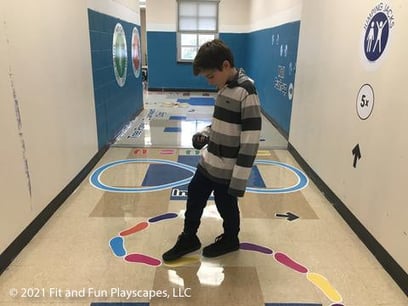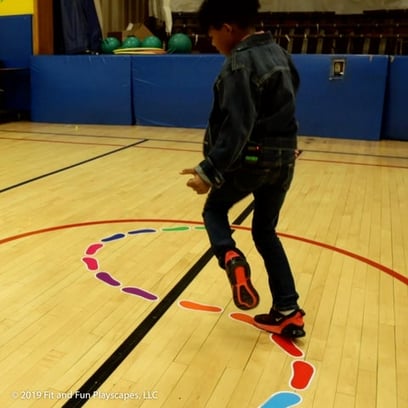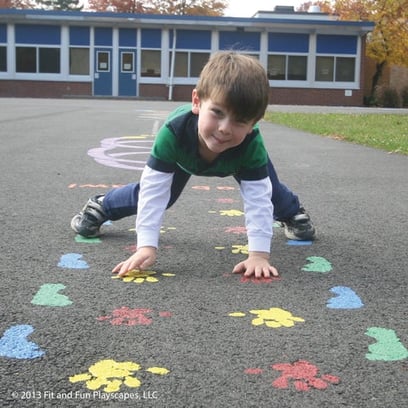Effective Sensory Pathways Design
A sensory pathway, or sensory hall, is a colorful, creative and playful way for kids to build connections in the brain that are responsible for sight, touch, sound, etc., which enable kids to complete complex, multi-stage tasks.
But what elements are necessary to make an effective sensory pathway? We brought in an expert to help!
Introducing Dr. Tim Davis!

Timothy D. Davis, Ph.D. CAPE teaches undergraduate and graduate courses at the State University of New York (SUNY) Cortland. Some of his courses include Adapted Physical Activity and Sport, Motor Development, Instructional Strategies in APE, Inclusive Outdoor Education and Positive Behavior Management and Discipline. He has been teaching for over 20 years and holds bachelor's and master's degrees in Physical Education and Adapted Physical Education from California State University at Chico. He holds a Ph.D. in Adapted Physical Education from the University of Virginia.
At SUNY Cortland, Dr. Davis serves as director of the SUNY Cortland CHAMP/I Can Do It Afterschool Peer Mentorship Program and the Sensory Integration/Motor Integration (SIMS) program. He is the creator of Project DREAM, a learning program that helps kids and students with disabilities, and Project LEAPE, a leadership course dedicated to helping kids and adults with disabilities.
Dr. Davis’s background makes him an ideal choice to discuss proper sensory pathways management. We got a chance to interview him via email and he does an excellent job breaking down a very complex topic in sensory pathways. His answers are valuable for anyone interested in the topic of sensory pathways, but specifically for those who are considering setting one up in their school or community. Take a read below.

Q: What are some important elements needed for an effective sensory pathway?
Davis: To think globally, we are always on a “sensory pathway” no matter what we are doing. Getting up in the morning, getting dressed, putting on our shoes, eating breakfast, brushing our teeth, walking to and from school – moving upstairs or downstairs, stepping off or on a curb, etc. Our environment is full of sensory stimuli and this is essentially how we learn and develop. Therefore, [when talking about] essential elements for an actual sensory pathway (e.g. hallway, etc.), I want to make sure we have ample opportunity for the following:
- Child-Initiated Movement
- Fundamental motor skills like jump, hop, leap, slide, skip, and dynamic/static balance
- Sensory based elements – proprioception, vestibular, tactile, and visual
- Midline-crossing activities
Q: Why are those elements effective?
Davis: The elements listed above are effective because they should emulate the sensory pathways we experience in the world around us. We can create or increase the opportunity for sensory-based activities through the pathway. [Try to] focus on vestibular – midline crossing – tactile/proprioceptive movements – e.g. stomp on the log, jump over the log, tiptoe across the log – etc.
Q: How do you incorporate “vestibular pathway” exercises into a sensory pathway?
Davis: Vestibular, or balance, is in EVERY activity we do – static or dynamic. Standing on the right foot and holding an airplane with the left leg up and arms out is one example. More dynamic is the ability to land after jumping/hopping/leaping – before moving onto the next activity – therefore spreading the elements FAR apart is important! It's ok if we don’t make it… we will eventually!
Q: How do you incorporate “proprioceptive pathway” exercises into a sensory pathway?
Davis: Proprioceptive is pressure: for example, leaning into the wall with hands or having your back pressed against the wall is proprioception. You can roll your body like a log on the floor or walk like a bear, an elephant, etc. [You can also] knee walk. All of these are examples of proprioception.
Q: How do you incorporate "tactile pathway" exercises into a sensory pathway?
Davis: Tactile is simply touch with hands AND feet, so do something barefoot – any movement – or use hands on the wall or floor while moving. [You can] carry something heavy or dribble a basketball while moving on the path, etc.
Q: How do you incorporate "motor planning skills" exercises into a sensory pathway?
Davis: Motor planning is always part of the sensory pathway. When you look at the path and try to think how your body will move across it, or from element to element, is the ability to motor plan. Motor planning can also be implemented by using sidewalk chalk on the wall (or chalkboard as you are moving along). Combined skills and movements require motor planning, and children who struggle with motor planning will often be all over the place; i.e., not following the path but rather zooming all over the hallway. Giving concrete visual cues and helping them to “follow the leader” is a great way to promote motor planning in young children.
Q: Of any recess games you can think of, what are a few "good" choices that you'd suggest for parents/teachers who have those with disabilities either at home or in the classroom so that they can develop the above skills at-pace with other students?
Davis: Follow the leader, as previously mentioned. Everyone has their own set of unique characteristics, so I would have to know more about the child to answer specifically but ANYTHING outside moving is always good!”
More Sensory Pathways Info from Dr. Tim
Understanding The Sensory System And The Importance Of “Sensory Pathways”
The Science Behind the Senses
Sensory Essentials: Vestibular/Tactical/Proprioception Senses
Difficulty with Self-Regulation and the Importance of Sensory Motor Skills
Providing Additional Sensory Motor Opportunities by Enhancing Sensory Pathway
Updated 3/25/22





Leave a comment